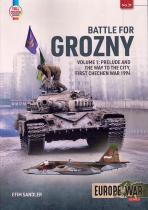The Six-Day War of June 1967 was a cataclysm for the Arabs; Israel emerged victorious and in possession of occupied territory in Saini, the West Bank, and the Golan Heights. The Arabs were furious at this outcome and determined to regain their lands and dignity by again making war with Israel. Added to the mix was a resurgent Palestinian liberation movement.
Renewed fighting began within weeks. It became a period of sustained combat, casualties, fiscal outlay, and diplomacy on the world stage unlike anything experienced previously. All involved militaries remained very active over the years following 1967 with more consistent mobilization, intensive training, and action than ever before and each side deepened their dependence on superpower arms supply. Adversary forces grew in size, adopted more complex weapons, and trained in new tactics, all in the tumult of combat of escalating intensity. The danger of this sparking another general war with potential superpower involvement was high. This period is collectively referred to as the War of Attrition.
The War of Attrition ranged from the Suez Canal though to Jordan – where the Palestinian movement challenged the government – and to the Golan Heights. Israel fought the Soviet Union in the air over Egypt, and Palestinian attacks targeted Israeli interests around the globe. The air forces of the nations involved employed some of the most advanced weapons then available from their respective sponsors.
It was an extraordinary time of confrontation, irregular warfare, rising terrorism, and national struggles seldom seen before or since. It became the world’s most violent, costly, and dangerous conflict after that in Southeast Asia. At the centre of it, Israel found herself engaged on all sides and isolated as never before. The struggle altered the geopolitical landscape and set the stage for the October 1973 war.
Volume 1 of this series covers the immediate aftermath of the Six-Day War as forces were reconstituted, strategies formulated and combat began anew on the new borders. The volume is illustrated throughout with photographs and includes specially commissioned colour artworks.









